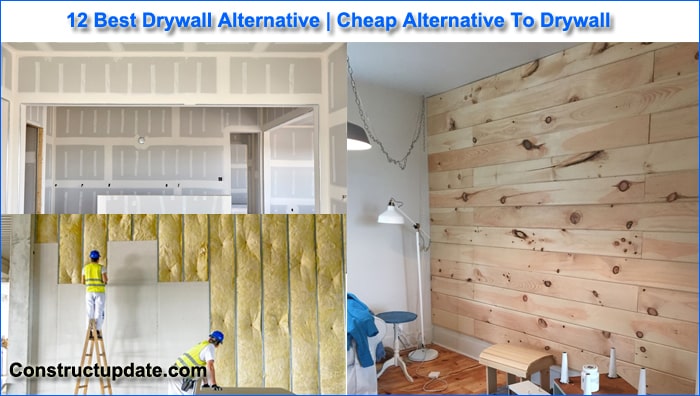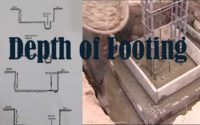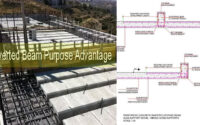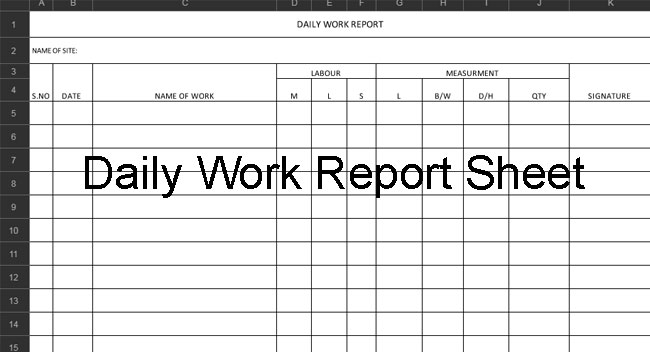Top Drywall Alternatives | Cheapest Drywall Alternative for Walls | What is Drywall
Drywall immediately comes to mind when we consider building interior walls. It is one of the most widely utilised building materials in modern homes since it is affordable and simple to locate.
What is drywall then? Gypsum is squeezed between two paperboards to create drywall. Gypsum is a soft sulphate mineral that has the advantage of being relatively fire-resistant because it is non-combustible.
Despite the many advantages of drywall, its installation requires skill and can be messy because it calls for taping, mudding, and sanding, the latter of which can produce significant amounts of dust. In busy houses, these walls may require frequent repairs since they are prone to holes, preschooler artwork, and other damage.
Basements, moist regions, and other areas that can flood are not the best places for drywall. It retains moisture, which makes it susceptible to mould and mildew in wet environments. Continue reading to discover some creative alternatives to wallpaper that are both durable and appealing to the eye.
What Is Drywall?
Drywall is plasterboard or wallboard made of two paperboards sandwiching gypsum, a powdery white or grey sulphate mineral that is non-combustible, lightweight, and inexpensive.
Let’s take a look at the dusty mess that it has created, which is nothing more than a laborious process that needs meticulous upkeep even after many days have been spent installing it. It ultimately demonstrates a lack of ability to fend off harm. A kid with a marker can also permanently damage an entire room in a flat, which is always visible.
The globe is moving toward a variety of drywall substitutes in order to combat this warping over time. The numerous materials, which are the new options the alternatives to drywall, are detailed in detail in the section below, including wood, plastic, plywood, plasters, bricks, and masonry.
Before the work is finished, there is a lot of taping, sanding, and mudding involved with drywall. In 1916, drywall was created. According to the Gypsum Association, North America produces more than 20 billion square feet of drywall annually. For home renovations, drywall is determined to be the most common material (i.e., tearing down and putting up new walls).

12 Cheapest Drywall Alternatives
1. Wood Planks
A traditional drywall substitute that has undoubtedly withstood the test of time is wood planks. Instead of being as troublesome to maintain as typical drywall, it offers the house an elegant and rustic character.
2. Stone Veneer
A manufactured stone veneer is a synthetic substance that is a cast reproduction of the genuine thing. It is more affordable, lighter, and easier to handle than actual stone. It is less resilient than stone but needs less upkeep. The Home Depot sells it in a variety of designs and hues, including this Desert Sunrise option. Stone veneer is popular as a kitchen backsplash or around fireplaces because it looks great in rustic settings. In damp or humid environments, stone veneer should be sealed.
3. Faux Brick
Natural brick may provide texture and visual appeal to a space and is a great choice for rustic and industrial settings. Faux brick, on the other hand, is a lightweight, simple-to-install substitute if you want the appearance without all the time-consuming masonry labour. Panels are an affordable choice that come in a range of designs and hues, like this traditional red brick option from The Home Depot. Only a few types of mimic brick are fire-rated, however, most are water-resistant.
4. 3D Panels
3D wall panels can be painted to complement your home and are made from PVC or recycled plant fibre, like this highly rated alternative offered at Amazon. The material is resilient, lightweight, affordable, and frequently used for accent walls. The panels should not be used near a fireplace or in the kitchen, though, as they are composed of plastic or plant fibre and are not heat-resistant.
5. Rammed Earth
Natural raw materials like compacted soil and gravel are used in rammed-earth construction to create walls, floors, and foundations. By utilising precast panels, this historical technology has been brought into the current age. These panels are particularly desirable to eco-friendly builders because they are inherently robust, insulating, and long-lasting. Rammed earth panels, however, can be hard to locate and pricey to install.
6. Lath & Plaster
Installed horizontally across studs or ceiling joists, lath is a thin strip of wood. In Lath & Plaster, the lath is plastered. This resembles wattle and daub (middle-age architecture) in the mediaeval style (a material consisting of a network of interwoven sticks and twigs covered with mud or clay). Lath can be made out of wood, hand-split lumber, more recent rock, or metal.
7. Exposed Concrete Block
A raw, unfinished finish, such as exposed concrete block, entails leaving the wall’s structural surface alone. The incompleteness, which can be painted to create the appearance of a textured panel, is where its beauty rests. High ceilings, glass, black furniture, and modern décor will all come together to create a stunning appearance. The placement of the furniture in the space, the amount of light, etc. also influence its aesthetic.
8. Cement Board
Cement board has many right angles, flat surfaces, and concrete all everywhere, just like brutalist architecture.
Pros
- Suitable in areas having high moisture.
- Use to visualize staircase pop.
Cons
- Use of it creates the impression of a dystopian nightmare when used on all four walls. Therefore, it is advised to utilise them for one out of every four walls.
9. Pegboard
In the garage, hobby area, and art studios, pegboards are preferred.
Pros
- Simple to install with the aid of screws, which can also be painted the same colour as the boards.
- Has lighting properties, such as the capacity to quadruple brightness without adding additional light fixtures.
- Allows for the hanging of both the largest and heaviest tools.
- Possesses strength that is sufficient to support shelves.
Cons
- Massive weight might lead to a breakdown and perhaps fall off.
10. Acoustic Panels
Acoustic panels offer a solution for builders who want to reduce noise entering or leaving a room since they will absorb sound and reverberation. They are typically built with a foam or wool interior and are typically framed in wood before being covered in canvas or fabric, like this choice from Amazon, which was named “best acoustic panel” in our guide to the finest materials for soundproofing. For added safety, be sure to look for alternatives that are fire rated.
11. Corrugated Metal
Corrugated metal, which is typically used for roofing, provides a novel method to give an interior feature wall or ceiling surface an industrial or rustic appearance. This material, which is available in sheets and panels, is typically composed of steel, but it can also be constructed of other metals, including new and recycled aluminium and copper. The panels can be put vertically or horizontally to produce two different looks, and they are available in a variety of finishes and wave patterns.
12. Cork
Although corkboard isn’t strong enough to cover every wall in your house, it may be a charming addition in a kid’s room or home office. The environmentally friendly material is excellent for hanging lightweight artwork and portraits and can also act as a thermal and acoustic insulator.
Most likely, cork will have a plywood or plywood substitute backing for wall applications. It is readily accessible in a variety of styles, thicknesses, and colours to fit any preference and is inherently fire- and moisture-resistant.





